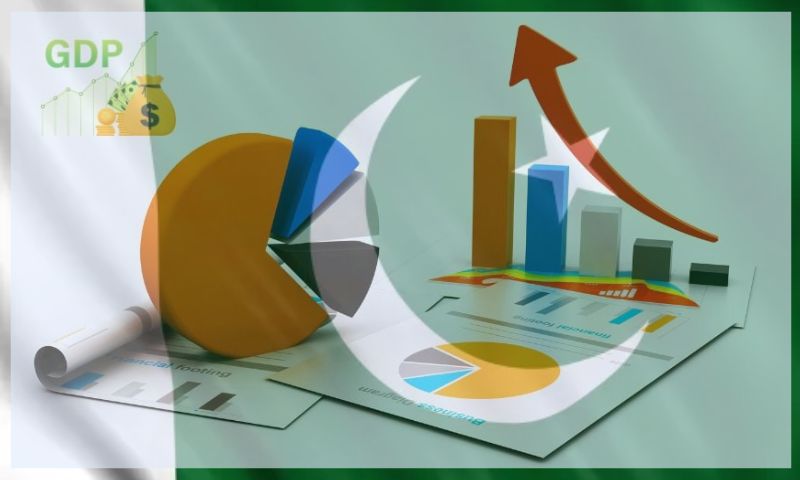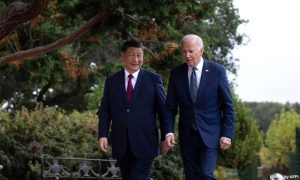By Qamar Bashir
A high exchange rate where the local currency, such as the Pakistani Rupee, is weaker against the US dollar can make goods and services relatively more affordable for foreigners visiting or earning in stronger currencies. An exchange rate of Rs. 286 to 1 US dollar means that, in terms of US dollars, expenses might seem lower for those converting their money.
While Numbeo’s Cost of Living Index offers a comparative perspective on expenses across countries, its reliance on self-reported data and specific factors presents limitations that render it subjective and erratic in determining the cheapest country in terms of living. The index’s foundation on self-reported data can introduce inconsistencies and inaccuracies, as individual perceptions and reporting tendencies vary widely. Moreover, the Index’s focus on standardized factors like consumer prices, rents, groceries, and restaurant costs neglects key elements influencing overall living expenses, such as taxes, healthcare, and individual spending behaviors. This lack of comprehensive consideration leads to a skewed assessment, overlooking critical components that significantly impact the actual affordability and quality of life within a country. Consequently, while the Cost of Living Index serves as a comparative tool, its reliance on limited data and exclusion of crucial factors underscores the subjective and erratic nature of declaring a country the cheapest based solely on this criterion.
Interestingly, the methodology used to assign first place to Pakistan in terms the most affordable country was to compare the affordability of goods and services in Pakistan compared to a baseline location like New York City but ironically, Pakistan’s exchange rate may suggest cost-effectiveness, high inflation rates significantly diminish the purchasing power of the local population. This economic factor can render basic necessities relatively expensive for many within the country, impacting their ability to afford essential services despite the apparent favorable exchange rate.
Pakistan’s economic landscape, marked by high unemployment rates and lower per capita income at approximately US $1500 annually per person, contributes to economic challenges for its citizens. The unemployment rate, forecasted at 8.50% in 2023, curtails job opportunities and strains household budgets. This reality directly affects the affordability of goods and services, potentially creating a discrepancy between the perceived cost-effectiveness for foreigners and the actual affordability for the local population.
While the exchange rate might portray Pakistan as a cost-effective destination when converting currency, the economic constraints faced by the local population, including high inflation, unemployment, and lower income levels, challenge the assertion that Pakistan is the cheapest country. True affordability encompasses the ability of residents to afford not only individual goods but also basic necessities, healthcare, education, and overall quality of life, factors that might not align with the apparent affordability based solely on exchange rates.
Moreover, the high inflation rate in Pakistan, especially at 30%, significantly impacts the purchasing power of the local population. Inflation tends to erode the value of money, making everyday goods and services more expensive for residents, thereby reducing their purchasing power.
With the statistics that only 52.35% of the population are factually employed in 2023 (approximately 95.51 million people) which means that the burden of supporting a larger unemployed segment could affect their own spending power. In some cases, employed individuals might face constraints in meeting their financial needs and aspirations due to the economic pressures resulting from high unemployment rates.
High unemployment rates can also impact the overall economy by reducing consumer spending, affecting demand for goods and services, and potentially leading to slower economic growth. This can create a cycle where businesses face reduced revenues, leading to potential layoffs or salary cuts, further exacerbating the unemployment issue.
Persistently high unemployment rates can lead to social unrest, dissatisfaction with the government, and increased pressure on policymakers to address the employment crisis. It can also affect social cohesion and contribute to various societal issues.
Therefore, high unemployment rate in Pakistan not only affects the financial stability and purchasing power of the unemployed but also indirectly impacts the spending capacity of the employed population. This scenario can create economic challenges, social strains, and implications that go beyond individual financial constraints, influencing the overall economic well-being of the country.
Pakistan’s forecasted GDP growth of -0.5% in 2023 presents an additional layer of economic strain for its citizens. Economic contraction amplifies the affordability challenges faced by the local population. With a shrinking economy, job opportunities might diminish further, exacerbating the unemployment situation and affecting household incomes. The compounding effect of high inflation, unemployment, and now a contracting economy creates a stark reality where basic goods and services might become relatively more expensive, diminishing the purchasing power of individuals.
An economy experiencing negative growth can lead to a rise in the cost of living. This may directly impact the affordability of goods and services, making them relatively more expensive for the local population despite any perceived advantages stemming from exchange rates. Individuals and households might find it increasingly challenging to afford everyday necessities due to the economic contraction, further highlighting the disparity between apparent affordability and the actual purchasing power of residents.
Considering the additional strain of negative GDP growth alongside prevailing economic challenges, the initial assessment of affordability for the local population in Pakistan requires reassessment. The combination of high inflation, unemployment, lower income levels, and an economic downturn significantly undermines the real purchasing power of individuals. This complex economic scenario underscores the importance of a comprehensive understanding of local economic realities when gauging affordability, emphasizing that the country’s economic conditions extend beyond exchange rates and require holistic consideration.
The staggering increase in prices of essential goods and services, such as petroleum products and bread, doubling within a year, adds acute strain to the economic woes faced by the Pakistani population. This surge in prices compounds the challenges brought by the economic downturn, with GDP growth plummeting from 6% to a forecasted -0.5%. In this dire economic landscape, the increasing cost of basic necessities significantly impacts the daily lives of citizens, straining household budgets and diminishing the purchasing power of individuals.
As unemployment rates rise and the GDP contracts, the labor market faces increased strain. Despite these economic challenges, the wages and salaries for many remain stagnant. This static income amidst soaring prices of essential goods creates a disparity, making it increasingly difficult for individuals to afford basic necessities. The affordability gap widens as citizens grapple with the double blow of rising prices and stagnant incomes, significantly reducing their purchasing capacity.
In the face of an economic downturn, escalating prices of essential commodities, stagnant wages, and heightened unemployment rates, the initial notion of affordability in Pakistan for the local population needs reevaluation. The stark reality reflects a situation where economic challenges have severely eroded the real purchasing power of individuals. The combination of high inflation, stagnant incomes, and an economic downturn necessitates a holistic understanding of the economic hardships faced by citizens, challenging any notion of perceived affordability based solely on exchange rates or isolated indicators.
In conclusion, relying solely on studies that compare a country’s cost of living to an expensive city like New York City without considering broader economic, social, and quality-of-life factors presents an incomplete view of affordability. This narrow approach overlooks local economic realities, quality-of-life indicators, and the complex dynamics affecting a population’s purchasing power. To truly understand affordability, a holistic assessment that encompasses various economic conditions, including inflation rates, unemployment, wage stagnation, and quality-of-life aspects beyond basic goods and services, is crucial. Such comprehensive analysis ensures a more accurate depiction of the real affordability experienced by the local population, steering away from oversimplified comparisons that might misrepresent the true economic realities.




























